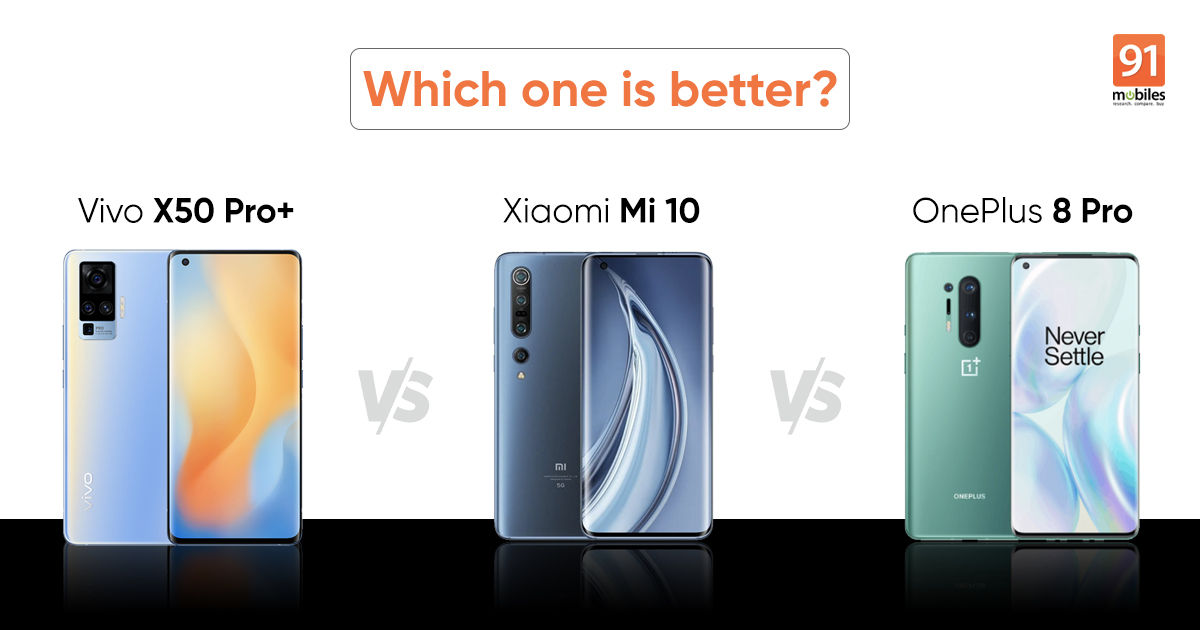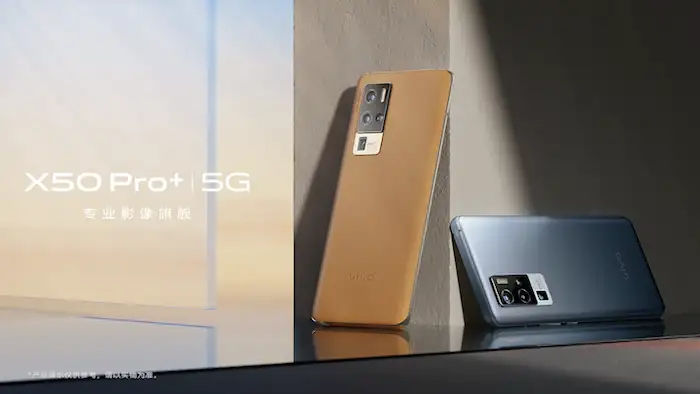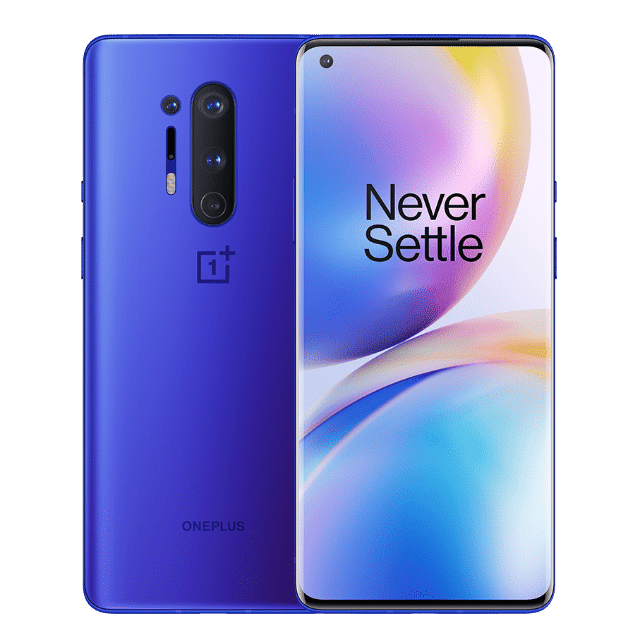
Vivo X50 Pro+ is the latest Android-powered flagship offering from Vivo. The company announced the phone in China alongside the Vivo X50 and Vivo X50 Pro. Vivo has also confirmed that the X50 series will launch in India soon. We do not know if the brand will launch all three models in the country, but if it does, the Vivo X50 Pro+ will be going up against the likes of OnePlus 8 Pro and Mi 10. So, let us find out how the Vivo flagship stacks up against the best from OnePlus and Xiaomi in terms of specifications, features and design.
Design and display
Barring the camera layout and colour finish, the design of the Vivo X50 Pro+, OnePlus 8 Pro, and Mi 10 is pretty much similar. All three handsets feature a punch-hole display with curved edges and minimal bezels. While OnePlus 8 Pro and Mi 10 have glass-layer at the back, Vivo X50 Pro+ flaunts a premium faux leather finish. That said, the 8 Pro has an advantage on the utility front as it features an IP68 rating for dust and water resistance.

Coming to the display, the Vivo X50 Pro+ packs a 6.56-inch full HD+ Super AMOLED panel that bears HDR10+ support, 120Hz refresh rate and 240Hz touch sampling rate. The OnePlus 8 Pro sports a 6.78-inch AMOLED display with a higher QHD+ (1,440 x 3,168 pixels) resolution and it also supports a 120Hz refresh rate. As for Mi 10, you get a 6.67-inch AMOLED screen with Full-HD+ (1,080 x 2,340p) resolution, but with a lower 90Hz refresh rate and 180Hz touch sampling rate.
Chipset and software
The Vivo X50 Pro+, OnePlus 8 Pro, and Mi 10 are evenly matched on the performance front (at least on paper). All three devices are powered by the Snapdragon 865 5G SoC clocked at 2.84GHz. The chipset is paired with Adreno 650 GPU and Snapdragon X55 modem for 5G connectivity. Vivo X50+ Pro and OnePlus 8 Pro both ship with up to 12GB RAM + 256GB storage variant. The Mi 10 is available with 8GB RAM and up to 256GB storage in India.

Software-wise, the Vivo X50 Pro+, OnePlus 8 Pro and Mi 10 all ship with Android 10 that is layered with their respective custom skins on top i.e FunTouchOS, OxygenOS and MIUI 11, respectively.
Cameras
All three phones feature quad cameras at the back. The Vivo X50 Pro+’s camera setup comprises of a 50MP Samsung GN1 primary sensor, an 8MP telephoto lens with 60x hybrid zoom, a 13MP wide-angle lens, and an 8MP macro lens. Upfront, the phone gets a 32MP shooter for selfies.
The OnePlus 8 camera system includes a 48MP Sony IMX689 primary lens along with another 48MP ultra-wide lens, an 8MP telephoto lens and a 5MP colour filter lens. On the front, the OnePlus 8 Pro features a Sony IMX471 lens with a 16MP image sensor.

The Mi 10’s primary camera crushes the OnePlus 8 Pro and Vivo X50 Pro+ with a whopping 108MP sensor. The sensor is paired with a 13MP ultra-wide sensor that bears 123-degree FOV, a 2MP macro sensor, and a 2MP depth sensor. For selfies and video calling, the Mi 10 flaunts 20MP camera backed by various modes including the Night and Portrait mode. Additionally, The Mi 10 is the only phone apart from the Samsung Galaxy S20 series to support 8K video recording.
Battery, security, and connectivity options
The Vivo X50 Pro+ is driven by a 4,315mAh battery with 44W wired fast charging support. Unfortunately, the flagship does not support wireless charging. The handset has an in-display fingerprint scanner for security and AK4377 Hi-Fi audio chip. Connectivity features include 5G, 4G LTE, dual-band Wi-Fi, Bluetooth 5.0, GPS, NFC, and USB Type-C port.
The OnePlus 8 Pro houses a 4,510mAh battery with Warp Charge 30T wired and wireless charging support, which OnePlus claims can charge half the battery in just 23 minutes. The handset also supports reverse wireless charging and in-display fingerprint scanner. The connectivity options are pretty much the same as X50+ Pro.
The Mi 10 is backed by a 4,780mAh battery and support 30W wired and wireless charging tech. It also features an in-display fingerprint scanner and connectivity options such as 5G, 4G LTE, dual-band Wi-Fi, Bluetooth 5.0, GPS, NFC, and USB Type-C port.
Price
Vivo X50+ Pro price in China is set at RMB 4998 (approx Rs 52,900) for the 8GB RAM + 128GB storage variant. The phone’s 8GB + 256GB and 12GB + 256GB variants cost RMB 5,498 (approx Rs 58,200) and RMB 5,998 (approx Rs 63,500), respectively. The Vivo X50 Pro+ price in India hasn’t been announced yet, but it should more or less similar to the China prices.
The OnePlus 8 Pro price in India starts at Rs 54,999 for the 8GB RAM + 128GB storage variant. The top-end 12GB RAM + 256GB storage option has been priced at Rs 59,999. The OnePlus 8 Pro has been launched in India in Onyx Black, Glacial Green, and Ultramarine Blue hues.
Mi 10 India price is set at Rs 49,999 for the base 128GB storage option, whereas the 256GB variant costs Rs 54,999. The handset is available for sale in India in Coral Green and Twilight Grey colour options.
from 91mobiles.com https://bit.ly/3gNHabT
via gqrds

No comments:
Post a Comment